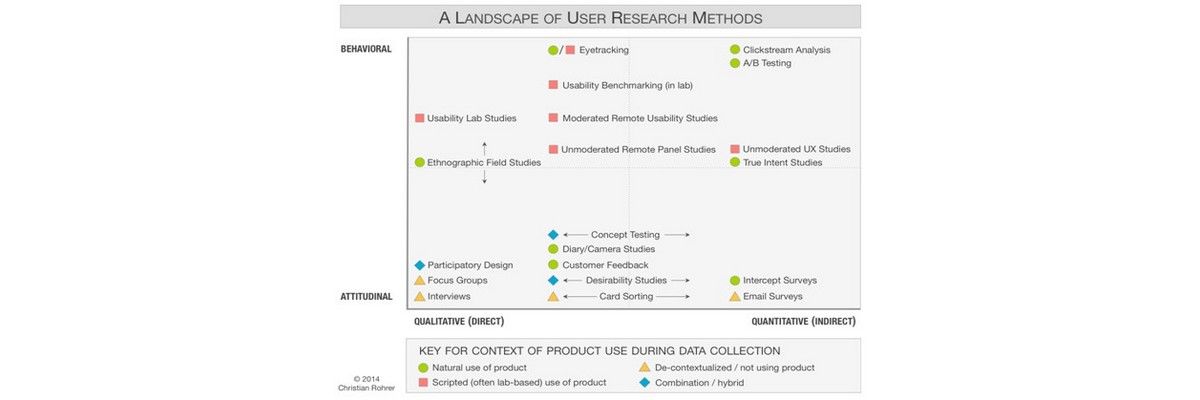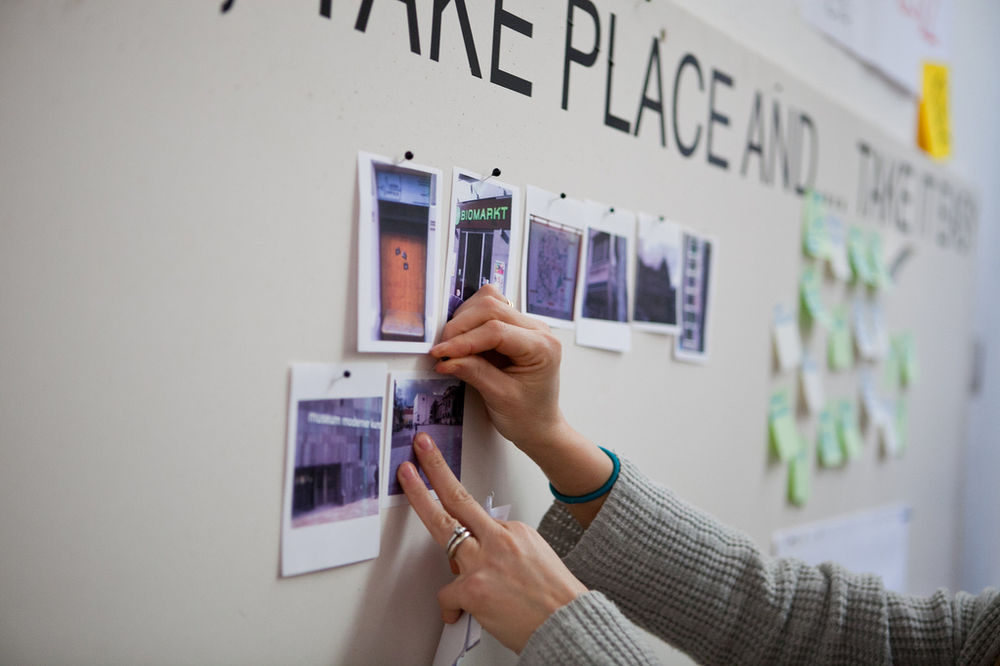UX research is the most essential part of the UX design process. If you do not have a clear idea of who your target user is and what they want (or need); it is nearly impossible to provide them with the right user experience.
To make your work easier for you, we have crafted a 10-step guide to make your work easier and to help you communicate user research to your clients and boss.
- Evangelize. With a bit of luck, your company or client is already aware of the importance of user research in a design project. If not, make sure you find ways to communicate your points and put all team members and stakeholders on the same page. Find examples, case studies, or any other resources to help you evangelize the importance of user research upfront. Just take one of our courses and we will equip you with lots of good arguments.
- Rewind. It is likely that your client or boss has come to you with a pre-made solution, design, or service. At this point, he/she wants you to do user research to fully understand this solution/design/service in a usage context. It could also be yourself who have a ready-made design that you want to research from a UX perspective. In this situation, danger lurks.If you have a pre-designed solution, you need to resist the temptation to push it onto your users. The goal of UXresearch is to find out what someone thinks – as opposed to hand them something and say; “This is great! Isn’t it?” A leading question like that may get you the answers you want but not the answers you need. In other words, be very mindful of your own biases – or those of your client and boss.
- Team up. Team diversity is really important and we mean both academic and professional diversity. You want researchers with experience of the topic in hand and also those without. Why? Those with experience may be able to drill down in-depth with your users to get a deep understanding of their issues/needs/wants/etc. Those without, on the other hand, may pick up on issues/needs/wants/etc that more experienced people miss because they make assumptions based on their experience.
- Choose. The toolbox for user research methods is large and they all have pros and cons; the best option depends on the needs of your project. In order to select the right one(s) consider elements such as: budget, time frame, access to target users, results from desk research, etc. With all these in mind – and above all with a clear question or problem to answer or solve – choose a user research method. The image above made by Christian Rohrer is very helpful to have nearby. For the full article: http://www.nngroup.com/articles/which-ux-research-methods/
- Plan. This short word involves many tasks that need be taken care of before reaching out to users. By now, the target audience is clear but you still need to 1) prepare a screener to recruit the most appropriate users, 2) hire a recruiting company or do it yourself, 3) schedule the interviews, focus groups, contextual inquiry or the method of your choice. More at: https://www.interaction-design.org/ux-daily/121/the-basics-of-recruiting-users-for-usability-testing. Besides the recruitment, do not forget to prepare your script for the interview!
- Equip yourself. It is really difficult to observe someone properly when you’re talking to them. You’re trying to listen to them, you’re trying to make notes, and you’re trying to ask relevant questions – you’re basically overloaded. If you video-record your interviews, you’ll be amazed at how much they reveal when you play them back afterward. They can help inform not just the current research but also help you optimize your behavior for the next interview. In addition, we recommend a team of two for each interview. More interviewers would be too much but two people listening to a user is just the right amount. One to ask questions and lead the interview, the other one to take notes and take care of the video camera.
- Connect. Building a rapport with the user is critical. Your users need to be comfortable in order to fully contribute to your research. That means your team needs to be capable of creating rapport with users quickly.A simple routine for this might be:
- Introduce yourself and what you do
- Explain that the user should treat you like you don’t know anything at all about the product
- Ask some simple questions to start off. Even if the questions are simple, direct themat some details of the product. That will encourage the user to follow your example and go into details.
- Be curious. Learn how to ask more questions and listen. You are there to learn from the user. It can be hard to work out what someone means by their words and even body language alone. In other cases it can be hard for someone to express what they mean in words. The more questions you ask, the easier it becomes to find out what someone means. “Why?” is a very handy question to ask and you can ask it often to drill down further.
- Analyze. Debrief with your fellow interviewer as soon as possible and take notes so that you do not rely only in your memory and that you use these insights to improve the next interview. Once you have done all your meetings with users, consolidate results and prepare the necessary documentation to communicate about the findings.
- Share. The more the rest of the team members and stakeholders are aware and incorporate, the easier it will be from now on. Ensure that all of you are on the same page and that the key takeaways from the research phase are always present.
How are you feeling after reading this list? If you want one word – just one single word – which is the most essential word in user research, then it is empathy. You need empathy to understand your client or boss and drive him/her where you want in terms of UX design. You need empathy to put yourself in the target users’ shoes and find a solution that fits them.
If you want to learn more, we have a new course on User Research – Methods and Good Practices (https://www.interaction-design.org/courses/user_research_-_methods_and_best_practices.html).
10 User research steps: Evangelize, Rewind, Team Up, Choose, Plan, Equip Yourself, Connect, Be Curious, Analyze and share. Or just Empathy. [Tweet this]












